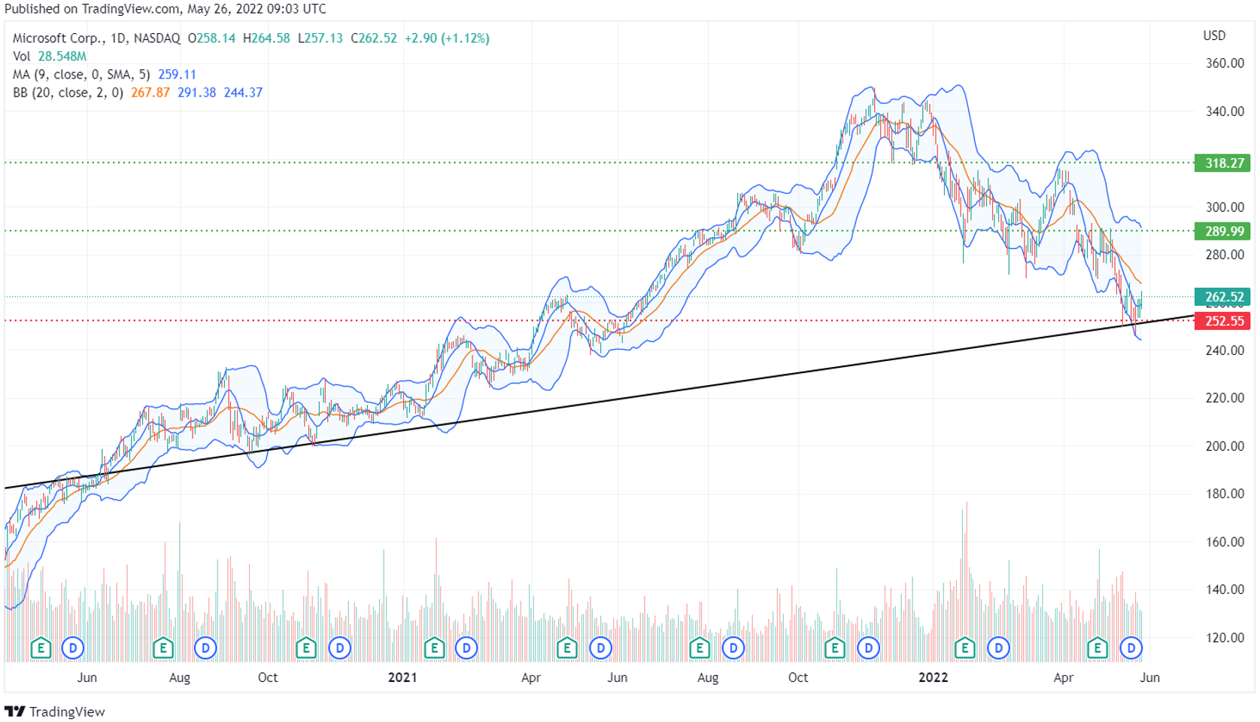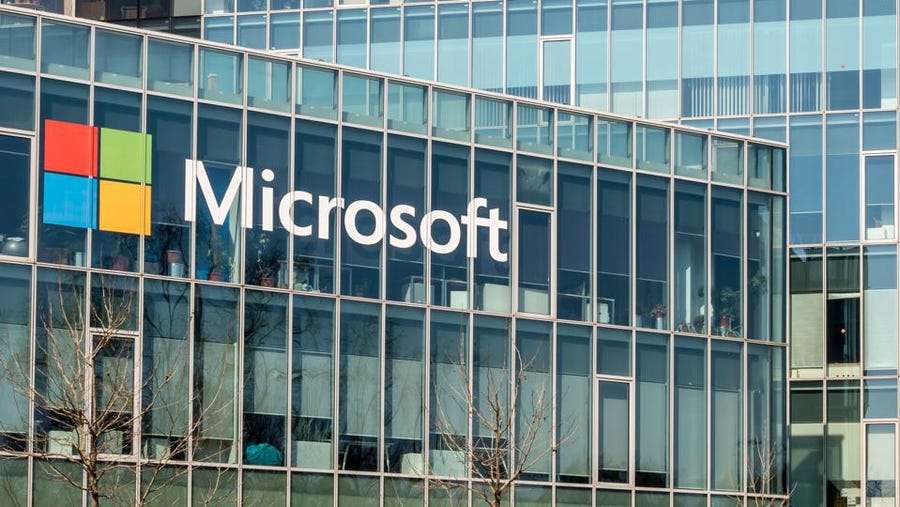Bill Gates and Paul Allen started Microsoft in 1975 at the dawn of the personal computer era to make PC operating system software. And then the company's Windows operating system then came in the mid-1980s to dominate the PC landscape, which then expanded over the years into productivity software, server software, internet services, video games, and PC hardware and accessories.
The company is basically organized into three equally sized broad segments: productivity and business processes (which include Microsoft Office, cloud-based Office 365, Exchange, SharePoint, Skype, LinkedIn, Dynamics), intelligence cloud (infrastructure- and platform-as-a-service offerings. Such as Azure, Windows Server OS, SQL Server), and more personal computing (Windows Client, Xbox, Bing search, display advertising, and Surface laptops, tablets, and desktops).
Since the 1990s, Microsoft has increasingly diversified from the operating system market and has made several corporate acquisitions, their largest being the acquisition of LinkedIn for $26.2 billion in December 2016, followed by acquisition of Skype Technologies for $8.5 billion in May 2011.
Microsoft went public on March 13, 1986, opening at $21, and closed at $27.75. The company began to offer a dividend on January 16, 2003, starting at $0.08 per share for the fiscal year followed by a dividend of $16 per share the subsequent year, switching from yearly to quarterly dividends in 2005 with $0.08 a share per quarter and a special one-time pay-out of $3 per share for the second quarter of the fiscal year. Though the company had subsequent increases in dividend pay-outs, the price of Microsoft's stock remained steady for years. Today, the share price was traded at around $260.
In April 2019, Microsoft reached the trillion-dollar market cap, becoming the third U.S. public company to be valued at over $1 trillion after Apple and Amazon respectively. Microsoft also has the fourth-highest global brand valuation.
In its performance, Microsoft stock price growth has driven up by a staggering 260% in the last five years, and up 100% in the last three years. It then rose around 4% since last year, before gradually declining, losing about 20% of the value in 2022.
The current bearish spell also comes after two years during which Microsoft shares made some powerful gains. In 2021, the software giant's stock gained almost 50%, almost double the expansion of the benchmark Nasdaq 100 Index.
The shares recent pullback hence put investors wondering: Is Microsoft stock a buy right now?
How long the current sell-off continues is anybody’s guess, but there is a strong case to be made that Microsoft stock is a good buy-on-the-dip candidate. The pullback was amid the rush by investors to avoid high-growth stocks at a time when the U.S. Federal Reserve is aggressively tightening monetary conditions—a move that could push the economy into a recession.
Among the reasons that the recent selloff could be a good opportunity for investors to buy the Microsoft shares are:
Microsoft is a high-quality, lower risk tech giant with a wide economic defence. The software maker is among the companies which are best positioned to weather economic disruptions as well as have the strongest pricing power to offset inflationary pressures.
The company is well-entrenched in the digital economy due to its diversified business model that includes a suite of Office products, its cloud services, and gaming unit.
The company’s cloud computing business has been the major driving force behind the stock’s advance in the past five years—a period in which its CEO, Satya Nadella, branched out into new growth areas, mainly focusing on the cloud computing arena. This unprecedented streak of gains, according to many analysts, has more room to run. One of the major factors behind this optimism is the industry-wide transition toward cloud computing that has only just started. Microsoft’s Azure unit, which rents computing power to start-ups and larger businesses, is able to thrive for years to come. Most recently, Meta platform also had selects Azure as its strategic cloud provider to advance its AI innovation.
On April 26, Microsoft delivered better-than-expected results for its fiscal third quarter ended March 31st. Microsoft earned $2.22 a share on sales of $49.4 billion in the March quarter. Wall Street had expected Microsoft earnings of $2.19 a share on sales of $49 billion. On a year-over-year basis, Microsoft earnings rose 14% while sales climbed 18%.
For the current quarter, Microsoft expects to generate sales of $52.8 billion, based on the midpoint of its guidance, and up from $46.2 billion in the year-earlier period.
From a technical point of view, when analyzing the chart, we notice several important areas, formed by a combination of multiple trend lines in multiple time frames. A support zone was made at 252.55. And for resistance areas, can be observed at a resistance zone ranging from 289.99 to 318.27, formed from a horizontal line in the daily time frame.

In the last month, Microsoft has a been trading in the 246.44 - 290.98 range, which is quite wide. It is currently trading in the middle of this range; hence some resistance may be found above.
The high in the last 52- weeks of Microsoft stock was 349.65. According to the current price, Microsoft is 75% away from the 52-week high. And the low for the same period was 243.00, which is 108% away from the current price.
The chart also shows that Microsoft has an average volume of 28.548 million. This is a good sign as it is always nice to have a liquid stock.
Outlook
In recent months, traders have faded or aggressively sold every rally amid a lack of faith in the outlook, so it's uncertain whether gains will be sustained this time around. However, it should be noted that even during large market downturns, there may be instances where stocks bounce back for several days or even weeks as sellers close out their bearish positions to take profits before reengaging short bets once better levels are reached.
To be confident that this is not another dead cat bounce, it would be important to see a follow-through to the upside and a broadening of breadth over the next few days (more stocks participating in the rally). For this to happen, the volatility index (VIX), known as the investors’ fear gauge, will have to continue to fall and stabilize around the 20 zone. Incoming data will also have to hold up and show that the US economy remains resilient despite mounting headwinds, including inflation, supply chain issues and softening spending.















